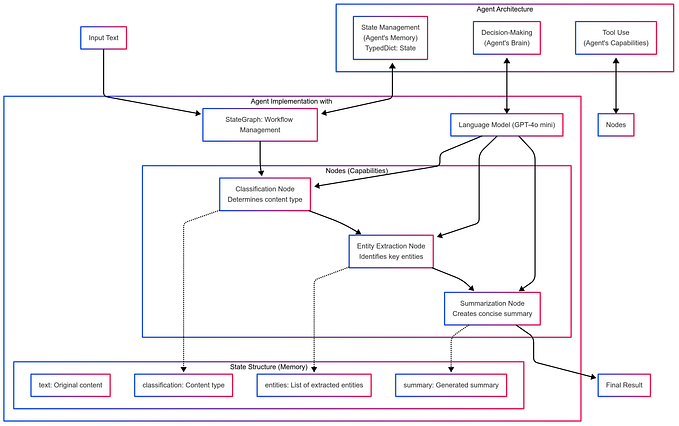The Impact of AI on Medical Education

Is medical education ready to make a move from the information age to the age of AI? Well, it may not, but doing so will be a critical requirement for improving the outcomes of students and advancing the field. As we have seen previously with electronic health records, noteworthy changes in healthcare require comprehensive and significant reforms.
[Related Article: How AI Is Revolutionizing Medicine]
But why exactly do we need to “reboot” medical education one more time?
AI is known to be an outstanding tool for processing and analyzing huge volumes of data and holds great promise in areas such as diagnostics, but the range of its applications in the industry involves education, too.
Applications of AI on Medical Education
The increasing popularity of AI tools in the healthcare industry is clear from the rising amount of research carried out on this topic. In fact, if you type something like “AI and medical education” in a search engine, you’ll see a bunch of peer-reviewed articles where healthcare researchers are trying to find ways in which technology can benefit the field.
In the sections below, we’re going to outline the applications of AI in medical education described in the latest research to give you an idea of how technology is being applied to help students.
- Curriculum Analysis, Learning, and Assessment
One of the most comprehensive studies of the applications of AI and machine learning in medical education was published in JMIR Medical Education journal. This integrative review of 37 peer-reviewed articles outlined a range of applications in three areas: curriculum analysis, learning, and assessment.
Curriculum Analysis
According to the authors, healthcare educators should explore the application in curriculum review because it’s a time-consuming and arduous process that could be automated. The list of the advantages of AI over traditional analysis methods included a better ability of AI to solve multidimensional problems, establish strong relationships between variables, and provide greater classification accuracy.
In fact, AI is predicted to develop a part of the curriculum for medical students in the next decade.
When the most important barrier to the adoption of AI in this area — a limited digitalization of medical education learning management systems — is overcome, many medical schools will apply the technology to create curriculum maps as well as perform analysis-related tasks.

Learning and Knowledge Development
This is the most common area of application described in the recent healthcare research. Most scholars reviewing the current AI projects in medical education noted that the ability to provide immediate and personalized feedback was the main reason behind the adoption.
Here’s the list of advantages and use cases of AI in this area:
- Feedback for learning
- Reduced costs
- Assessment of the learning process with a guided learning pathway
- No harm to patients
- Less educator supervision needed for students.
For example, in one study, researchers used a machine learning model as a learning tool to provide two types of feedback to students: interim and final. The tool assessed students’ performance and generated personalized and appropriately scaffolded feedback on their diagnostic decision-making and cases involving patient cases.
Performance Assessment
AI has the ability to deliver an objective assessment of medical students’ performance as well as specific assignments quickly and effectively while reducing overall evaluation costs.
Corinne Black, a nurse researcher from Grab My Essay, says: “Not only AI can be used to design an evaluation program able to produce tailored feedback, but also ensure the quality and focus of the curriculum.”
Another prominent example of AI doing an accurate assessment was described in this study published in the Journal of the American Medical Association. The main purpose was to define whether a machine learning algorithm could differentiate surgeon trainees according to their stage of practice in complex simulated neurosurgical situations.
A total of 50 students involving neurosurgeons, senior residents, medical students, and junior residents took part in 250 simulated tumor resections. To achieve the goal of the study, the researchers applied a system delivering on-demand surgical evaluations at the convenience of the learner and limited input from educators.
The results were quite promising. The machine learning algorithm classified the participants with a 90 percent accuracy with 6 performance metrics, including:
- Movement associated with a single surgical instrument
- Force applied by surgical instruments
- Tissue removed or bleeding caused
- Both instruments used in concert.
According to the researchers, the algorithm succeeded at classifying surgical expertise with greater precision than expected. This means that it could be used for both the examination of surgeon trainees and surgeons in high-stakes certification evaluations.
- Virtual Patients and Virtual Reality
In many of the above mentioned studies, researchers have relied on virtual patients (VP) to create simulations and reduce the cost of training.
The Association of American Medical Colleges defines VPs as “a specific type of computer-based program that simulates real-life clinical scenarios.”
The simulations are created using the user-friendly virtual reality (VR) technology. A wide range of tasks is available for medical students while participating in projects, involving VPs, including carrying out a physical exam, obtaining a history, making diagnostic and therapeutic decisions.
For example, a VP can be trained to interact with medical students and even engage in face-to-face dialogues both verbally and non-verbally. They can answer questions and act in ways commonly displayed by real and standardized patients, thus adding to the engagement of the learners.
The promise of VR and VPs for medical education is significant. VR training materials can be shared with educational institutions online to be accessible anytime and anywhere there is an Internet connection. This means that any medical institution can get access to train the students in the latest VR simulations. Moreover, the updates to medical scenarios can be delivered quickly.
There’s also a chance that younger students will be more engaged, therefore achieve better outcomes, as VR and VPs combine video, audio, animations, images, and high-tech equipment. Since generations like Millennials and Gen Z are tech-savvy and appreciate technology, applying VP in medical education could be stimulating for them than textbooks.
- Chatbots
Chatbots — apps designed to interact with people by mimicking human online behavior — are already a big deal in areas such as eCommerce, and they’re already making some impact on medical education.
For example, PatientX is a safe and realistic simulation of various healthcare scenarios that enables medical students to practice clinical reasoning and receive personalized feedback. The people behind the chatbot say that the main goal of PatientX is to provide students with much-needed autonomy to make their own decisions in terms of diagnosis and selecting investigations.
“When they graduate and are working as a doctor, they’re expected to gain those skills overnight,” Elsevier quoted Eliza van Wulfften Palthe, a medical student who has been directly involved in the creation of PatientX. “So, we meet their needs for a safe environment to practice and gain confidence in the decision-making process.”
With chatbots being rapidly adopted in many other industries, it’s safe to suggest that we’ll see a lot of them developed specifically for the healthcare industry as virtual nurses, educational assistants, and more.
The “Reboot” is Needed
As you can see, the answer to whether the benefits of AI in medical education are real is, of course, yes. The research shows a lot of interest from medical education researchers and practitioners, and it makes perfect sense considering the use cases you’ve just read about.
[Related Article: Generating Neural Networks to Detect Alzheimer’s]
It’s safe to predict that a lot of educational institutions in the healthcare industry will adopt AI-based apps and algorithms within the next five years, and maybe even discover a bunch of new use cases in the process. So, yes, we do need to “reboot” medical education one more time because the benefits of AI are certainly worth pursuing.
Helene Cue is a passionate writer and editor who explores a broad spectrum of topics that revolve around marketing and tech. She currently works as an in-house writer at BestEssayEducation. Her pieces are always captivating and informative.
Read more data science articles on OpenDataScience.com, including tutorials and guides from beginner to advanced levels! Subscribe to our weekly newsletter here and receive the latest news every Thursday.










